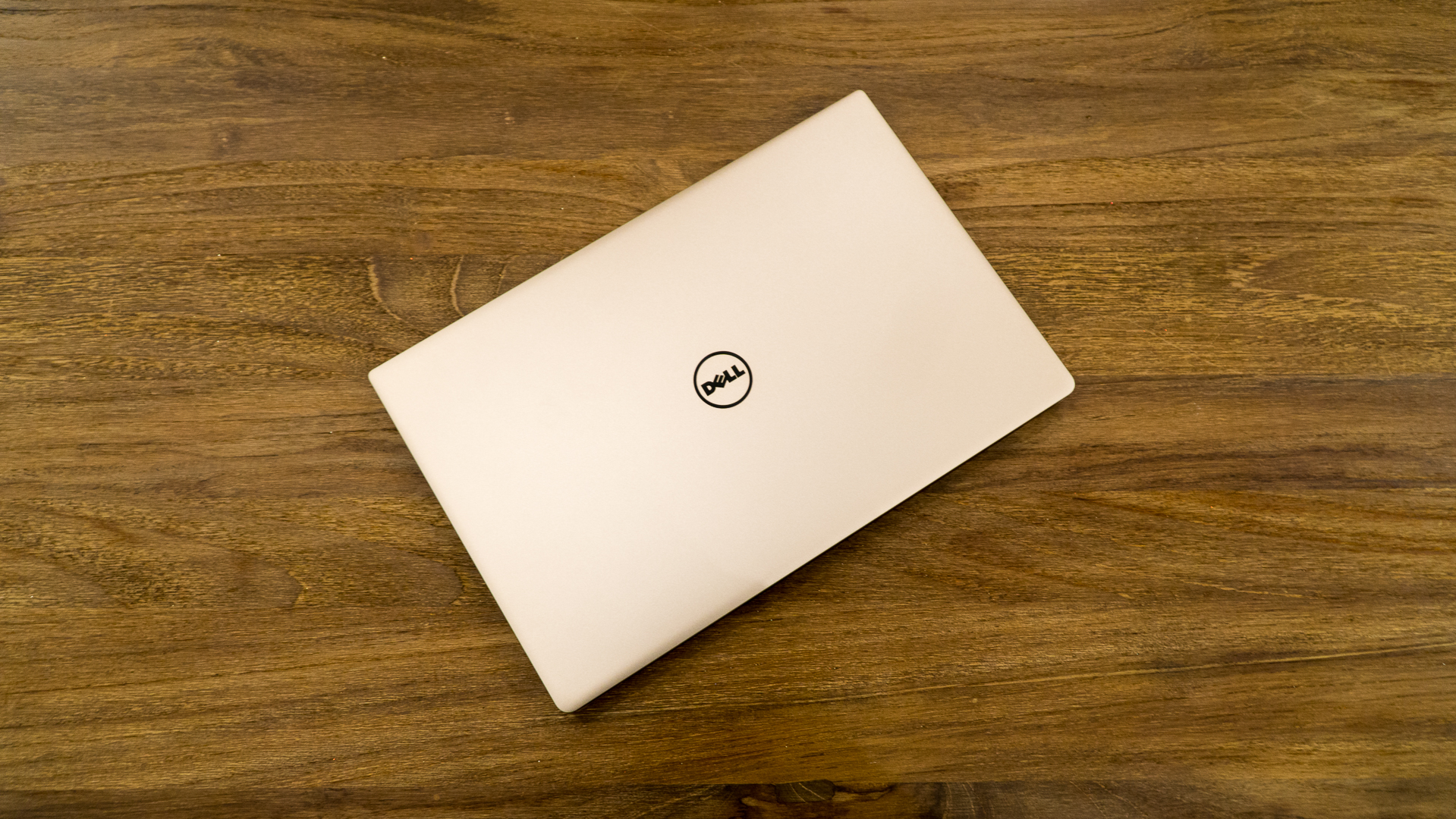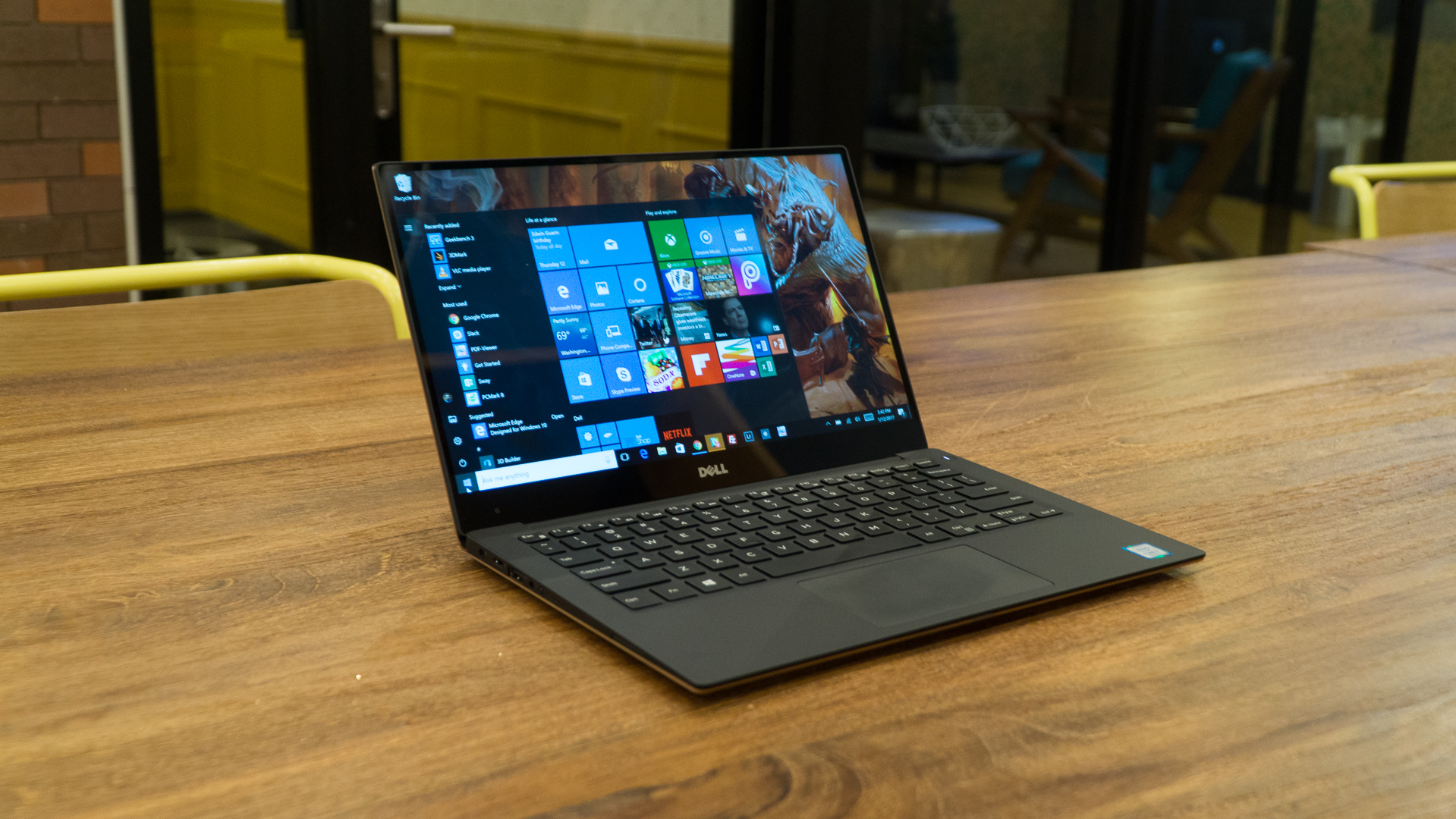Why you can trust TechRadar
We’ve already touched on how the XPS 13 stacks up against the MacBook Pro – incredibly well, actually. But how about some choice competitors running Windows 10?
The Razer Blade Stealth, for instance, starts at $899 (about £736, AU$1,206) for a QHD (2,560 x 1,440 pixels), non-touch screen with the same 7th generation Intel processor and amount of RAM as well as storage. It’s a bit better off in visuals and offer more ports overall, but lacks that SD card reader. From there, the Blade Stealth gains a beefier Core i7 processor and more RAM and storage for much less than Dell can currently offer, but will always lack an SD card reader. That said, the Blade Stealth can more easily play games using Razer’s Core graphics card box.
Meanwhile, the HP Spectre x360 is a convertible 2-in-1 that doesn’t start for nearly as cheap as the XPS 13 at $1,049 or AU$2,199 (about £859) for the same processor and RAM capacity, but it offers double the storage behind an FHD touch display. From there, the Spectre x360 also gets more powerful innards for less and tops it off with a sharper UHD (3,840 x 2,160 pixels) screen for less than the highest-end XPS 13. This machine also lacks the SD card reader.
All told, the new XPS 13 can fit the mold of both a creative professional and the casual user’s life more readily than these two aforementioned laptops. But, that comes at the cost of a price curve that isn’t as generous as its rivals.
It all comes down to what you want out of your next laptop. If that’s versatility between professional and personal use, then the XPS 13 is tough to beat.

Performance
Here’s how the Dell XPS 13 performed in our suite of benchmark tests:
3DMark Cloud Gate: 6,397; Sky Diver: 4,111; Time Spy: 374; Fire Strike: 933
Cinebench CPU: 328 points; Graphics: 43 fps
Geekbench 3 Single-Core: 3,612; Multi-Core: 7,802
PCMark 8 Home: 2,521
PCMark 8 Battery Life: 4 hours and 3 minutes
Battery Life (TechRadar movie test): 7 hours and 13 minutes
The XPS 13 sent to us for review came packing the 2.7GHz, dual-core Intel Core i7-7500U processor powering the 3,200 x 1,800 resolution touchscreen with 8GB of RAM behind it. As you can see from the benchmarks, this chip has no problem gobbling up the various tests thrown its way.
That is, save for graphics output. You might be able to squeeze some Hearthstone or basic indie games out of this laptop, but if it’s gaming you want, check out something like the Alienware 13.
Getting back to general performance, we encountered zero issues with the XPS 13 during our usual workload. That’s 10-plus Google Chrome browser tabs with various spreadsheets, documents and webpages therein alongside the Slack chat client.
Sign up for breaking news, reviews, opinion, top tech deals, and more.
And, speaking of photo editing, the XPS 13 handled Lightroom with nary a problem. In fact, editing photos through a QHD+ screen helps take far better advantage of the RAW image files than even a QHD display. Exports tend to choke the system slightly, but that’s to be expected on most devices short of those with gobs of memory and desktop-grade processors.
All in all, expect some top-notch performance from this nearly top-end, $1,599 (£1,179, AU$2,499) version of the XPS 13. Though, we wouldn’t expect drastically worse output from the Core i5 variety.

Battery life
Dell, like all the other laptop makers, promises some insane longevity from the XPS 13, to the tune of up to 22 hours from the FHD model (Core i3) and 13 hours from the QHD+ version (Core i5) in the MobileMark 14 test. Since we’re testing the Core i7 variety with the QHD+ screen, we haven’t enjoyed nearly as long of battery life from the XPS 13.
Of course, that’s not to say the numbers we’ve recorded aren’t impressive. A score of 4 hours and 3 minutes is actually more than acceptable from the notoriously unforgiving PCMark 8 battery test. Better yet, the XPS 13 lasted a cool 7 hours and 13 minutes playing Guardians of the Galaxy at 1080p on loop. That’s just minutes from the 13-inch MacBook Pro’s figure of 7 hours and 24 minutes on the same test.
Both tests are conducted with the screen and volume at 50% with all radios but Wi-Fi deactivated as well as keyboard backlighting disabled.
If you were to use the Windows 10 Battery Saver mode throughout your use of the XPS 13 while away from an outlet, surely you could squeeze at least another hour out of the device. At that point, you’re looking at all-day battery life, the gold standard for laptops today.

All in all, the new XPS 13 does exactly what it needed to do to remain king of the hill in the laptop world in our eyes: improve and refine. By virtue of sticking to some old guns in an SD card slot and barrel connector for power, while adopting fresher tech at a slower pace (Thunderbolt 3 USB-C), the XPS 13 is better suited for a wider swathe of individuals than most of today’s top laptops.
We liked
The fact that the XPS 13 hasn’t changed all that much in a sea of laptops, which can’t seem to stop going thinner and adopting the newest tech wholecloth, and it actually works to its benefit. Dell is clearly aware that, frankly, some legacy features are still more attractive than the new hotness, like SD card slots and dedicated power ports. Couple that with the latest processor and a seriously sharp screen for one of, if not, the laptop to beat.
We disliked
There isn’t much that left us sour regarding the XPS 13, save for one feature that sorely needs a change: the webcam. For at least the past two iterations now, the XPS 13 webcam has been relegated to the far bottom-left end of the screen bezel. Frankly, holding video meetings or just calling friends or family over Skype is neither a productive or fun experience with the webcam oriented this way. We can only hope the XP 13 2-in-1 webcam design will bleed over into this model in the next revision.

Final verdict
Aside from that one mostly harmless shortcoming, the Dell XPS 13 persists as a thoroughly impressive piece of consumer computing hardware. Best of all, few modifications had to be made to get it to that point.
With this update, Dell manages to either meet or beat the new MacBook Pro, spec-for-spec, for 100 bucks less. If you’re torn between this laptop and Apple’s latest, we hope we’ve now made that decision easier for you.
But, even against the spate of Windows-bound laptops that have adopted burgeoning technologies whole cloth, the XPS 13 stands out with a healthy balance of old and new tech inside a device that’s comfortable to use for as long as it can last – a long time. For that reason, the Dell XPS 13 wins our Best in Class award.

Joe Osborne is the Senior Technology Editor at Insider Inc. His role is to leads the technology coverage team for the Business Insider Shopping team, facilitating expert reviews, comprehensive buying guides, snap deals news and more. Previously, Joe was TechRadar's US computing editor, leading reviews of everything from gaming PCs to internal components and accessories. In his spare time, Joe is a renowned Dungeons and Dragons dungeon master – and arguably the nicest man in tech.
